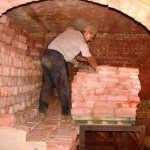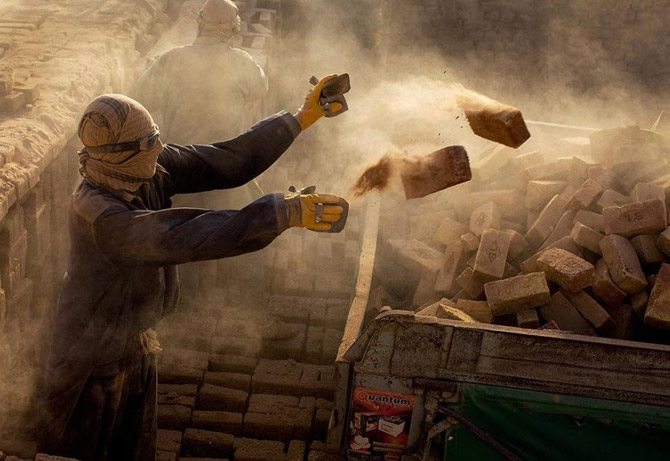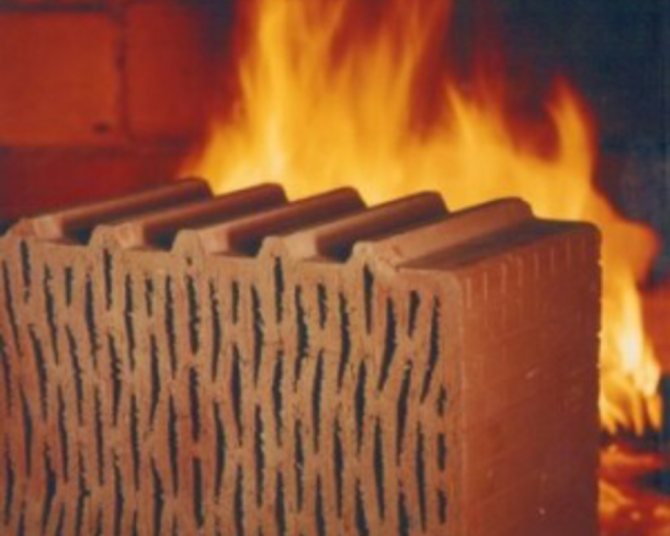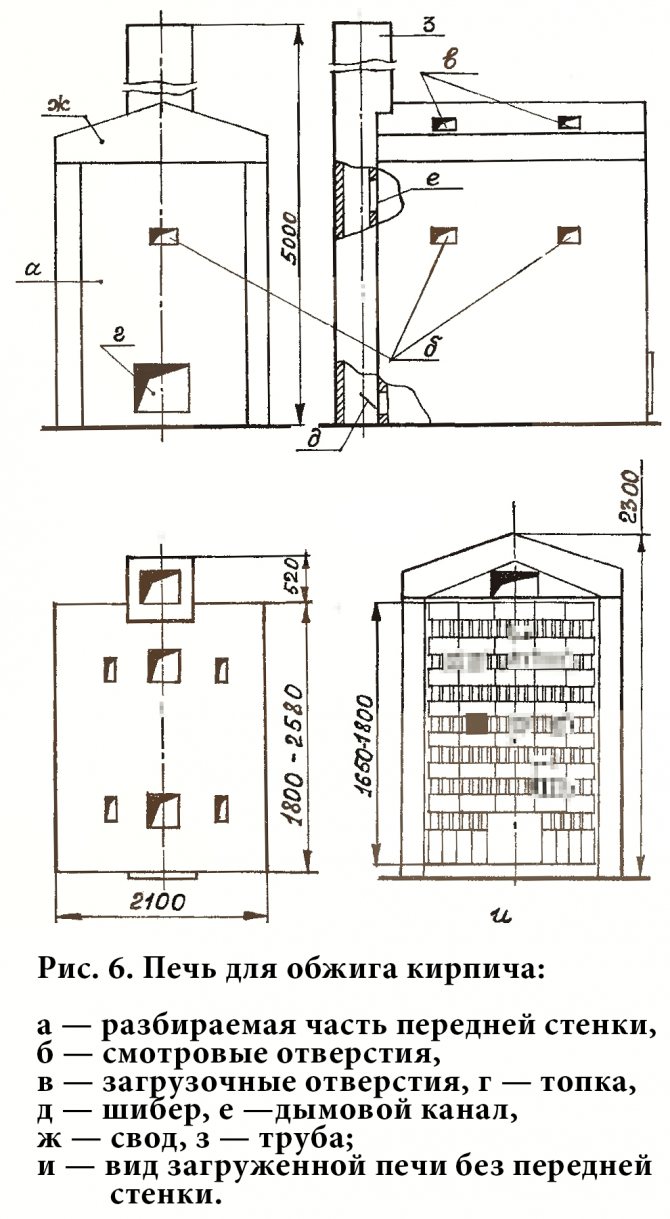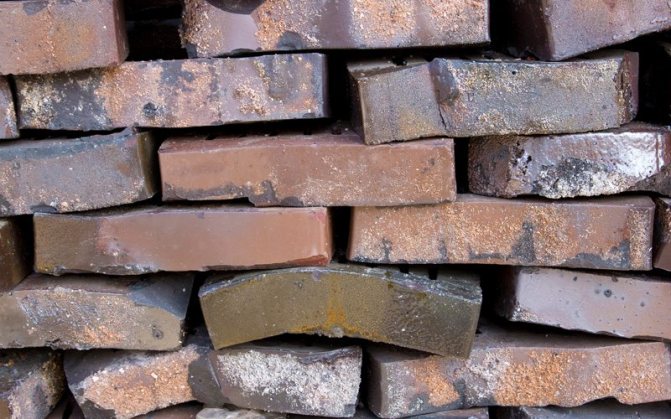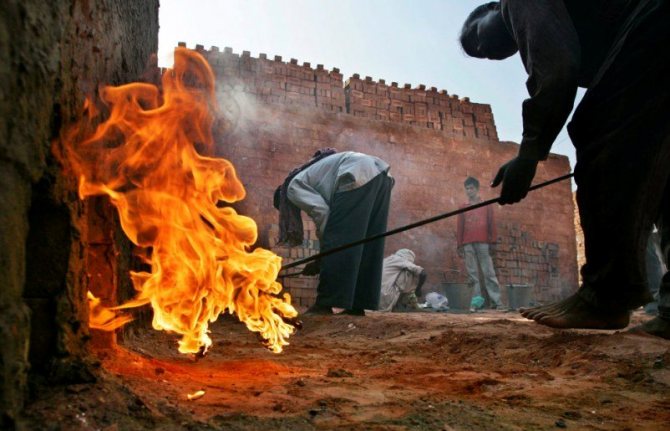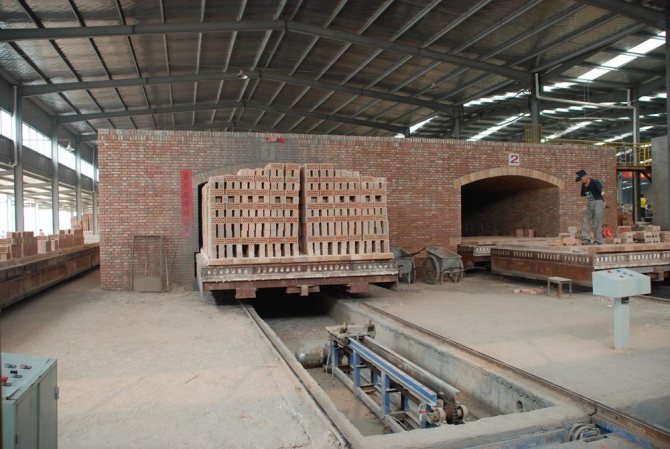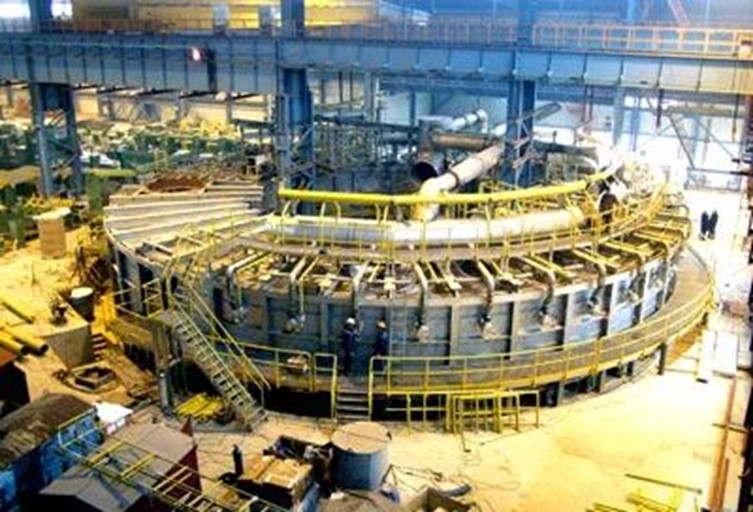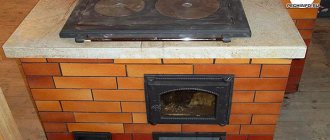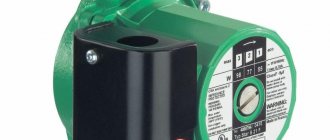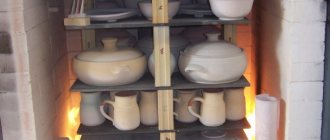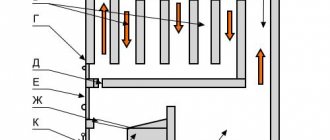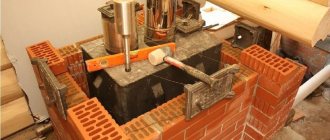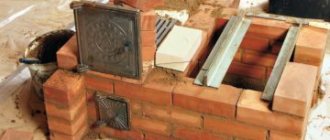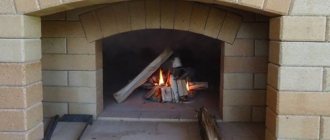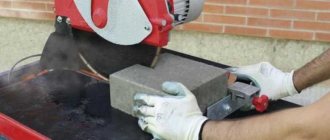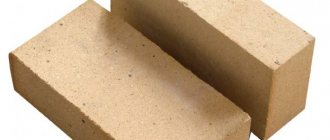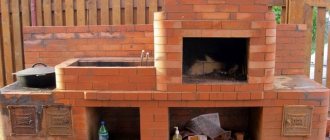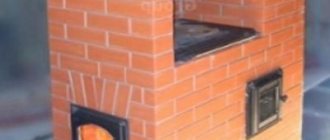Brick making techniques
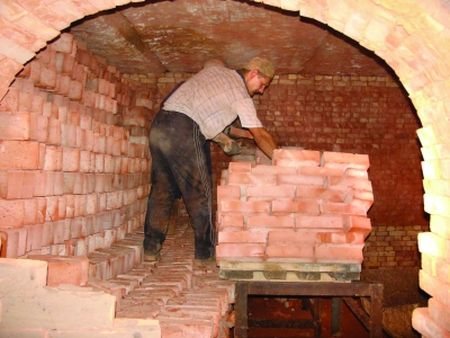
How does brick firing work?
There are two common methods for making bricks. The first is semi-dry and dry pressing. The plastic molding method is the second brick making method. The difference lies in the varying amount of moisture contained in the raw material in both production methods. It should be noted that the second manufacturing method is most widely used.
Plastic molded bricks can be hollow or solid. The principle of production of both types of bricks is the same, the difference is that clay is more thoroughly prepared for hollow bricks.
The following stages of brick making can be distinguished:
- Preparation of raw materials
- Bar molding
- Drying of raw bricks
- Burning
It should be noted that each stage is characterized by careful observance of the parameters. For example, in order to carry out the firing, which is the final stage of production, all technical requirements must be observed. Brick firing technology implies compliance with both temperature and time conditions. Otherwise, a defective product is inevitable.
Electrical equipment
Devices can have different configurations, but usually, electric furnaces are understood as front-loading chamber units.
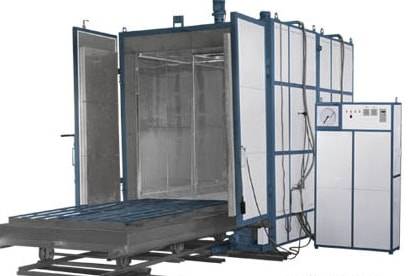

Figure 5. Electrical equipment for ceramic firing
Average equipment characteristics:
- metal base;
- lining (protective inner lining) of fire-resistant bricks and fiber-type materials;
- loading pallets are also made of fire-resistant materials;
- spiral heaters are located inside the chamber (in grooves);
- the design assumes automatic shutdown of electric heating elements when the chamber door is opened;
- limiting temperature - 1200-1400 degrees; the maximum is sufficient for most types of ceramics;
- high heating rate; the parameter is achieved due to good thermal accumulation of the lining;
- relatively small size; such devices can be placed even in a small workshop.
The disadvantage of electric ovens is the need to pay considerable electricity bills.
How ceramic bricks are fired
Raw brick contains from 8% to 12% moisture, enters the kiln for firing, where it is initially dried. Then the temperature increases to a level of 500-800 ° C, at which dehydration of minerals from the clay occurs. Because of this, the product shrinks. At temperatures above 200 ° C, the release of volatile organic impurities and additives is observed.
At this stage, the brick firing temperature rises at a rate of 300-350 ° C / h. The temperature is kept constant until the carbon is burned out. And only after that, the temperature is raised to 800 ° C. Exposure to such temperatures causes the product to change its structure. For some time, they maintain the maximum temperature for uniform heating of the brick. Then the temperature starts to decrease gradually.
The brick firing time can reach from 6 hours to 48 hours. While this process is taking place, the brick structurally changes repeatedly. If the production technology is observed, the output is a product with high strength and water-resistant qualities. It is characterized by sound and heat insulation properties, as well as resistance to various temperature conditions.
We recommend reading:
What to buy equipment for the production of Lego bricks in Russia?
Choosing a sand-lime brick machine.
The simplest burners for firing bricks, tiles and lime with liquid fuel
The material was found and prepared for publication by Grigory Luchansky
A source: M. Prokhorov, Ch. engineer of the Stavropol regional village construction. The simplest burners for firing bricks, tiles and lime with liquid fuel. "Rural Builder" No. 9, 1947
Stavropol oblselstroy; experienced great difficulties in providing fuel to the newly organized workshop for firing clay gypsum. In order not to disrupt its commissioning, it was decided to use the small oil reserves available on site as fuel in such a way as to obtain the greatest effect. GM Selstroy, engineer of the production and technical department of the regional trust. Kirillenko proposed two types of the simplest burners for burning oil, which gave positive results for burning clay gypsum. The burners are simple in design and can be cast by any iron casting plant.
In areas where there is a large amount of defective liquid fuel - waste populations, low-quality oil, etc. - the use of cast iron burners of the simplest type will give a great effect.
The first type of burners (Fig. 1) is a round cast iron cup with 16 through longitudinal holes from the bottom to the top. The height of the burner is 18 centimeters, the outer diameter is 15 centimeters, the walls are 3.5 centimeters thick, and the bottom is 6 centimeters thick.
Burners of this type are installed in a special cast-iron blower 45 centimeters long at the top, 30 centimeters at the bottom, 16 centimeters wide and 12 centimeters high (Fig. 2). The front end face goes at an angle to the bottom of the blower. The thickness of the walls and bottoms is 1 centimeter. The upper walls have half-centimeter quarters, into which the burner is installed with the bottom.
The blower and the burner are separately installed in the furnace hole of the furnace. The stove must have only one combustion hole. If the burner is installed in the burner when firing bricks, tiles or lime, then a combustion chamber must be made inside the burner, as in the furnace (see the installation diagram below). The width of the combustion hole or chamber must be no more than 6 centimeters greater than the diameter of the burner, so that there is no more than 3 centimeters of space between the wall of the burner and the wall of the wall of the combustion hole or chamber on each side. The length of the firebox or combustion chamber must be such that a cast-iron blower can freely fit into it. The height of the firebox or chamber is 35-40 centimeters. The height of the front opening of the firebox or chamber is no more than 20 centimeters.
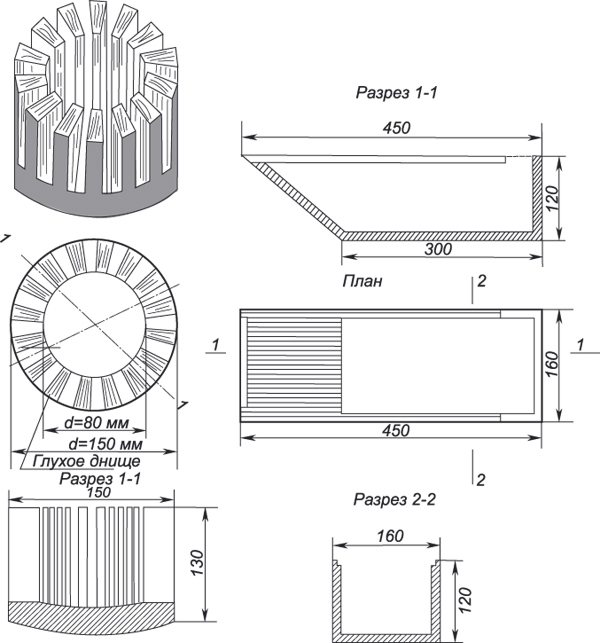

Fig. 1. Burner Ing. Kirillenko (first type). Fig. 2. Blown.
Chimneys in an ordinary room stove or in a kitchen fireplace with a cast-iron stove do not require any changes. The firebox of a stove or a kitchen hearth can be either straight (from the end) or lateral, i.e. with a turn of chimneys at an angle to the side. Oil and water are supplied to the burners installed in the furnace or combustion chamber through gas pipes with a diameter of 12-19 millimeters from the tanks, raised from the top of the burner by about 50 centimeters or more. The tanks can be installed on brackets embedded in the wall, or on special scaffolds on posts with crossbars and decking. The supply of oil and water is regulated by plug or valve cocks installed on the pipes.
Oil and water enter 25-mm gas tubes embedded in the masonry of the furnace hole or chamber, with a cut and expanded top end like a bell.
Tubes at an angle that provide free flow of oil and water, their lower end is directed to the center of the burner and rise above it by 7-8 centimeters.
A diagram of the burner installation into a furnace hole with a stove on top is shown in Figure 3.
Before the start of the furnace, oil is poured into the burner. After 10-15 minutes, when the burner becomes hot, the taps of the oil and water pipes are opened and the furnace is started, regulating the supply of the mixture with the same taps.
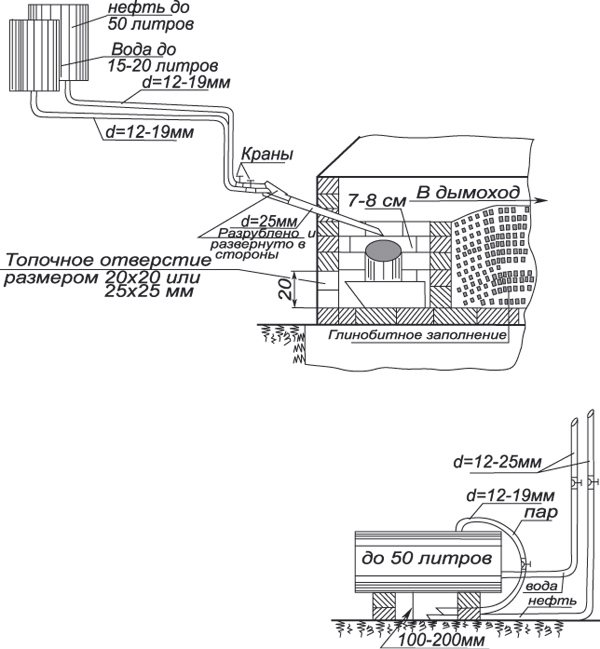

Fig. 3-4.Burner installation diagram and steam burner Ing. Kirillenko
This burner gave very good results when tested on clay gypsum firing. Oil consumption per 1 ton of fired clay gypsum was expressed in only 50 kilograms. When burning in the usual way, without a burner, 75 kilograms are required for firing 1 ton, - a saving of 25 kilograms. The flame is obtained up to 1 meter long.
In your case, two burners were installed. For firing bricks, tiles, lime, it will take up to four of them. The thrust is provided by the device of a pipe of appropriate height and diameter, if the burners are installed in a furnace with a stove. We installed a metal pipe with a diameter of 15 centimeters and a height of 2.5 meters - the thrust was excellent. Traction control is performed by a gate valve. When firing bricks, tiles, lime, no chimney is required. The download should be done in the usual way.
The second type of burner (Fig. 4) provides for the use of steam for the intensity of combustion, obtained here in the furnace.
A cast-iron pot with a capacity of up to 50 liters is installed in the furnace of a stove or on a pad, preferably made of refractory bricks, at a height of at least 20 centimeters from the floor. From the pot, under its bottom, there is a steam pipe with a diameter of 12-19 millimeters with a valve or plug valve.
A second tube of the same diameter is screwed into the bottom of the pot, coming from the water tank to the bottom of the pot. The third pipe, of the same diameter, with a tap on it, comes from the oil tank. Before the start of the furnace, oil is poured under the boiler, and water is poured into the boiler, which is heated to a boil, after which the taps of the steam and oil pipes are opened and normal combustion begins. The supply of steam, oil and water is regulated by taps. Combustion in this case is more intense and fuel combustion is more complete.
Usually a pressure gauge, thermometer and water gauge glass are not placed on the pot, but it would be nice to install them.
Back to section
Types of brick kilns
Various kilns are used during the firing phase. Which brick kiln equipment to use in production depends on various factors. The brick kiln is both a process equipment and a thermodynamic open system at the same time. Constant thermal processes take place in it.
Ring furnace
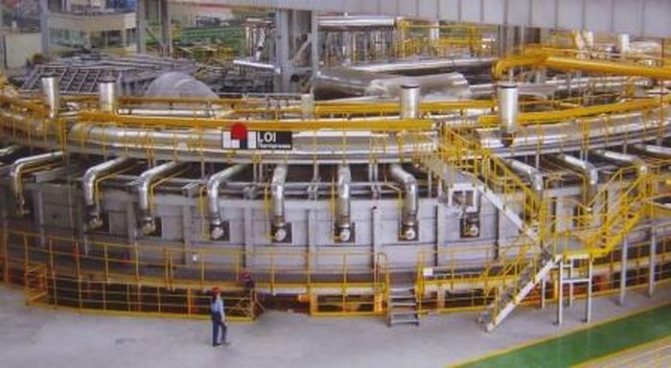

Ring brick kiln
One type of brick kiln is ring kiln. It is these vaulted furnaces that are most widely used in brick production. If an annular brick kiln is not installed in a production plant, then it is advisable to use it without a roof. The cost of construction is slightly more expensive compared to floor-standing ovens, however, their maintenance is much more convenient and easier.
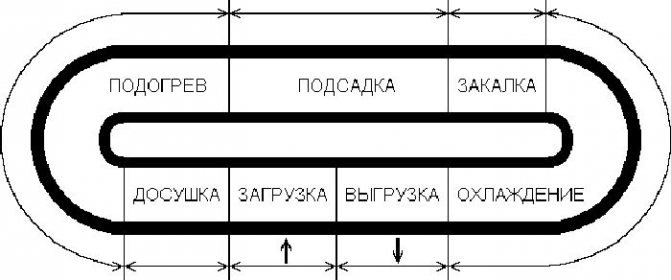

Diagram of a ring kiln for firing bricks
Firing bricks in an annular kiln gives a result in quality that is significantly higher than in a floor kiln, and fuel is consumed several times less per 1,000 fired bricks. Another advantage of these stoves is that they can be fired with different types of fuel. All this influenced the widespread use of ring furnaces.
Tunnel oven
Tunnel ovens are replacing ring ovens, gradually replacing them. More and more large brick factories are using them in their production. In tunnel kilns, bricks move on special trolleys, in contrast to circular ones, where the brick is stationary, and various temperature regimes are passed through it. The tunnel kiln for baking bricks is easier to maintain, because the unloading and loading of the batch of bricks takes place outside the kiln, where there are acceptable temperature conditions for the personnel. In addition, it is much easier to mechanize processes in front of the work area than in it. The kiln is a tunnel with rails inside.Firing bricks in a tunnel kiln takes place on trolleys, which stand one by one along the entire length of the tunnel. After a certain time interval, a new trolley with raw bricks enters the tunnel, and a trolley with ready-made products leaves the back of the tunnel.
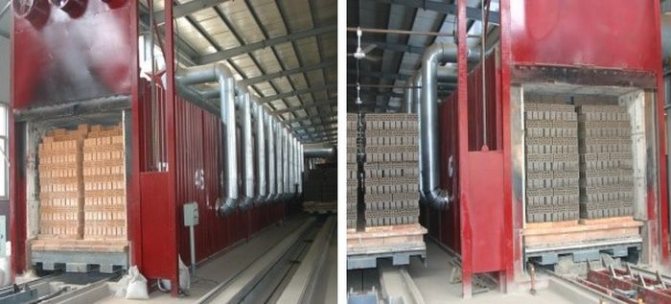

Tunnel brick kiln
The ovens can be fitted with various heat sources. It is possible to heat the kilns for roasting with coal, oil. An electric furnace is installed, or gas burners. Convenience of service and economic benefit of production depend on the type of the selected heat source. If a gas kiln for firing bricks is selected for production, then regardless of whether it is an annular or tunnel kiln, the result will be of high quality only if the technological parameters are observed.
You might be interested in:
Choosing a press for the production of Lego bricks.
What kind of clay is suitable for brick making?
Do-it-yourself ceramic kiln building
The type of furnace is selected based on the number of products to be fired. If the volume is small, we make an oven 250-300 liters. For larger work, you will need large furnace, the size of a small room.
Instruments
To build a small kiln, you need the following tools:
- Locksmith tools - for working with metal. Welding machine, set of wrenches, files, angle grinder (angle grinder), drill, hammers.
- For working with fireclay bricks and ceramics - bricklayer's hammer, trowel, diamond disc for angle grinders.
- Individual protection means. A respirator, goggles, gloves and thick cotton clothing are a must when working with angle grinders and mineral wool.
Work order
The furnace consists of a body, burner, ceiling, insulated chamber, lid.
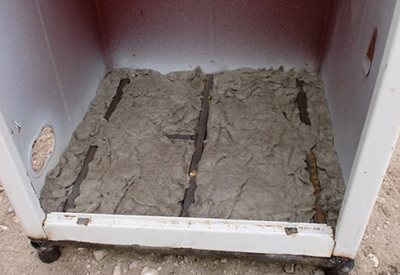

- Housing. We choose a rectangular metal box if fireclay bricks or a metal barrel are used as lining, if we insulate with mineral refractory wool.
In a cylindrical structure, heat distribution is more even. We weld the legs to the body.
- We put to the bottom of the frame lining, put four ceramic insulators from power lines or fireclay bricks per edge - they will serve as overlapping posts.
- We lining the walls and roof. It is better to lay fireclay bricks on mortar. We use high density kaolin or basalt wool. We twist the cylinder from a sheet of cotton wool in several layers to avoid seams - heat loss bridges. Fasten to the walls with an asbestos cord and ceramic buttons. The edges of the top of the insulation are wrapped outward, this will seal and heat insulate the joints of the lid and the body.
- We will overlap on the posts.
Important! The overlap is loosely fitted to the walls - through the cracks hot air must penetrate... The flame does not come into contact with the fired products.
With a large weight of products, we use dry masonry from fireclay bricks to cover, with a small weight - porcelain stoneware tiles of appropriate sizes.
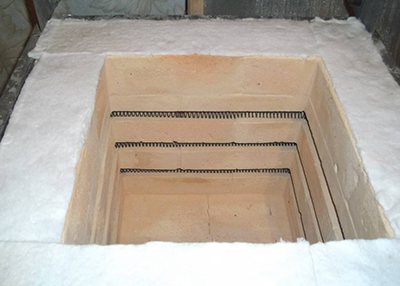

The oven is ready. A test run is carried out. If masonry was used with fireclay bricks, then first the furnace is dried in a gentle mode.
We fire bricks at home
If you step aside from large volumes of production in brick factories and think about smaller quantities of production, then it is possible to organize the firing of ceramic bricks at home. In order to burn a brick in small quantities, you will need an ordinary metal barrel with a capacity of 200 to 250 liters. Previously, it is necessary to cut out the bottoms in it on both sides.
Firing can also be carried out using a fire. To do this, you need to dig a hole half a meter deep, and install a barrel above it, raised above the edge of the hole at a height of about 20 cm.In a place where there is no lower bottom, it is necessary to adapt supports in the form of rods or a metal grate.This is necessary so that there is a basis for storing bricks inside the barrel.
After filling the barrel with bricks, cover its upper part with a lid in order to minimize heat loss. Firing takes approximately 20 hours, depending on the nature of the clay composition used in the brick. It is possible to fire bricks with gas, but as mentioned above, economic profitability depends on the type of fuel.
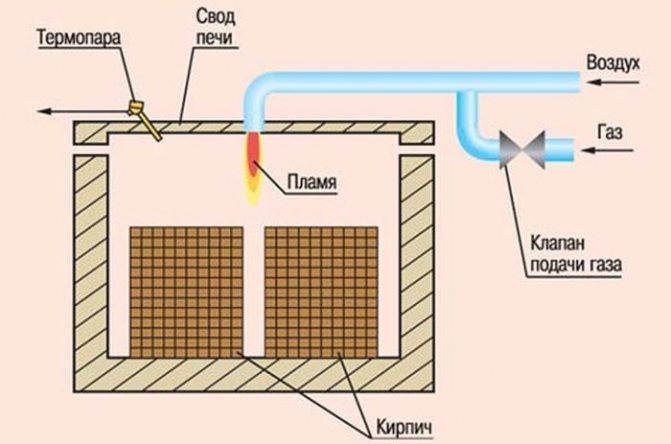

Diagram of a furnace for firing bricks with gas
We recommend these articles:
What are the best matrices for Lego bricks to buy?
How to choose a manual brick press?
Can you do it at home?
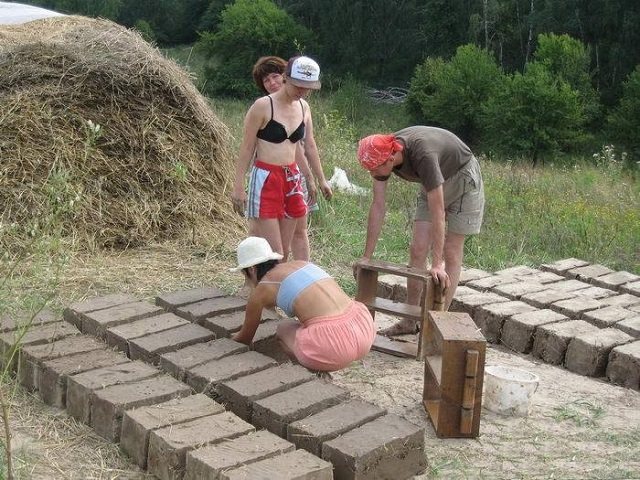

At home, it is possible not only to burn bricks, but also to make homemade building materials. However, with this process, the number of brick blocks with defects will be greater. Excessively hardened materials will not be recyclable. There are 3 types of materials:
- saman - without being fired with the addition of straw;
- raw brick;
- burnt.
To obtain a homemade brick, you need a pavement shape. You can also do it yourself. To do this, you need plywood and boards with a thickness of 25 mm. From these materials, shape elements are cut out and connected with nails 5-6 mm long so that the size of the future brick block corresponds to the standard, namely 250 × 120 × 65. Homemade adobe bricks are made from a mixture of lean and oily clay with the addition of straw in a 1: 1: 5 ratio, diluted with water until a homogeneous consistency. The finished solution is tightly placed in molds previously moistened and sprinkled with cement and closed with a removable lid. After drying for 7-14 days, the finished product is removed. To get a raw brick, they do the same procedure, adding sand instead of straw.
In industrial production, special furnaces are used for firing clay. At home, a homemade stove in the form of a metal barrel with a volume of about 200 liters with a carved bottom is suitable. Blocks for firing are placed in it, covered with a metal lid and installed on an open-top furnace. In the absence of such, it is mounted on legs 20 cm high above the pit, in which a fire is made at a depth of 0.5 m. To ensure the required temperature for firing, the fire must be maintained continuously for 20 hours. At the final stage of the process, it is made weaker. After 6 hours, the lid is removed and the brick is allowed to cool.
What you need to buy a brick kiln
If you think about starting a ceramic brick business, then you need to consider more serious options than burning bonfires in the yard. If you have already decided to buy a mini brick kiln, then you need to choose the most suitable option. It is worth thinking about what volumes are planned to be produced, because each furnace has its own capacity.
Also an important point is to choose a stove with a suitable type of fuel, because in our time of rapid changes in energy prices, this issue requires serious attention. It is worth considering the feasibility of purchasing a kiln with a higher capacity if there are plans to increase production.
When the questions on the main characteristics are resolved, it is necessary to choose the appropriate version of the model and start looking for options for a profitable purchase. The price of a brick kiln from different dealers and sellers may fluctuate, so there is no need to rush. Most of the representatives who sell these products do not put prices in the public domain, so you have to work hard to find a great deal. But the result of the savings can pleasantly exceed all expectations!
Output
In the video presented in this article, you will find additional information on this topic, which will allow you to learn more about brick kilns.On its basis, we can conclude that the independent manufacture of such products requires the development of a specific technical project for a specific type of materials.
It is also necessary to use such types of devices for firing that would be quite economical, efficient and could produce a certain amount of products in one cycle. That is why experts believe that it is easier to order ready-made material than to manufacture it for their own needs.
klademkirpich.ru

